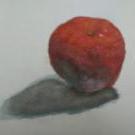This is a well-constructed piece of music. The imitative voicings are extremely reminiscent of the Classical era to which you ascribe your inspiration, so well done for staying true to form! I particularly enjoyed the instrumentation: percussive, double-reed, single-reed, and bowed. This gives the work an added layer of texturing in timbre. I think it's also worth noting that the piece is extremely playable — not saying that it's easy, per se, just that each instrument features balanced, idiomatic writing. Nice job!
Musically, this is very well-crafted, with clean, almost surgically precise harmonies throughout. The imperfect cadence that rounds out the opening Adagio, the Allegro's announcement in the tonal proceeded by counterpoint over the dominant, the following thematic variations in related keys all with masterfully-rendered transitions — very Mozartian, the height of elegant musical classicism.
There are some things to point out notationally, however. I'm not so worried about adding the tremolo to the violin section as others have pointed out, although I don't see any harm in doing so. Here are the issues that I noticed:
1) Dynamics in the piano. As a two-handed instrument that shares staves, the piano's dynamics must be written between the two parts, and not above and below as in the score. Indicating separate dynamics implies two different instruments... which is not the case here. Just omit the dynamics from the bottom stave and you'll be fine.
2) Trills. Throughout the piece, I notice you have put a flat sign next to many of the trill symbols. This indicates that the interval separating the trill's top and bottom notes should be shortened to a semitone. In the example below, the clarinettist would interpret this to be played as a trill between A-flat and B-double flat. This is not reflected in the recording provided. (I realize you were probably just trying to notate that the auxiliary note should be B-flat, which is already represented by the key signature. If that's the case, just get rid of the flat signs. A trill with no flat/sharp/natural signs will already be played between two notes that follow the key signature.)
3) Slurs. While you have supplied some slurs to the quick sixteenth notes in the Allegro section, I think you ought be even more liberal with them, especially with the wind instruments. This clarinet passage, for example, is going to sound a bit staccato if you expect the player to tongue each of these notes:
I think it would be better and more realistic to provide slurring among each group of sixteenth notes, at least for the clarinet and bassoon.
4) Repeat bar. Where is this bar repeated from?
If it's meant to be repeated from the end, you should probably notate this by adding an ending repeat bar there.
All right, that's all from me. Again, great piece of music. I wish you the best of luck in the music festival!


